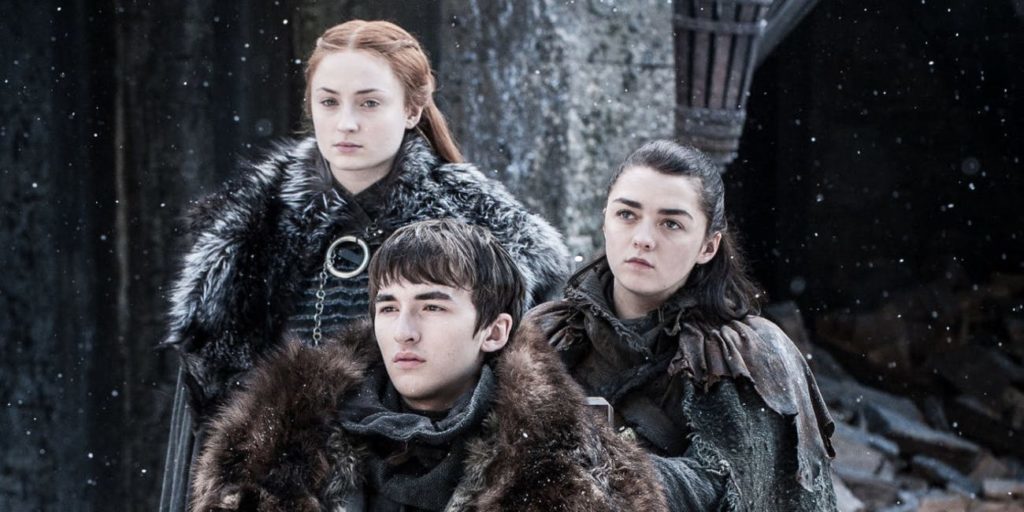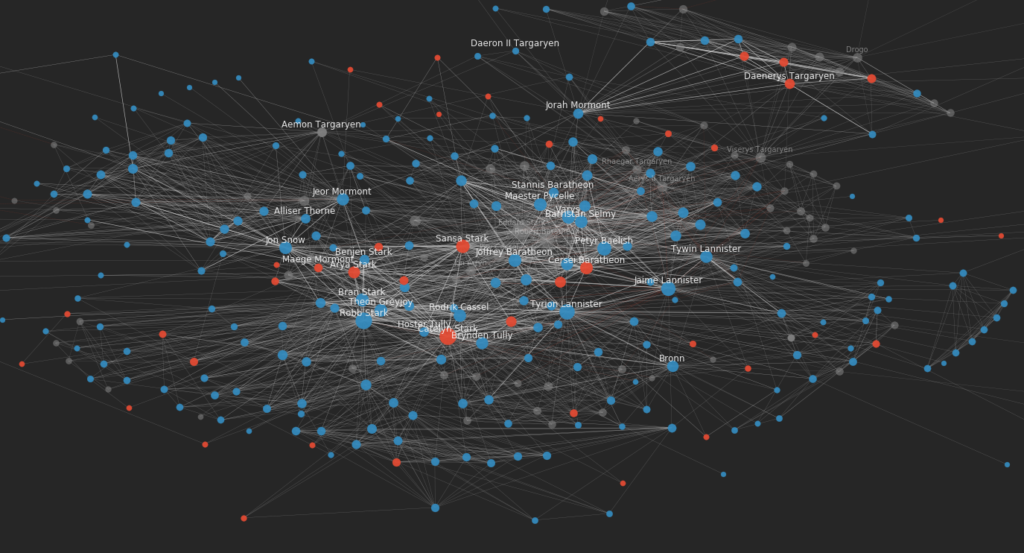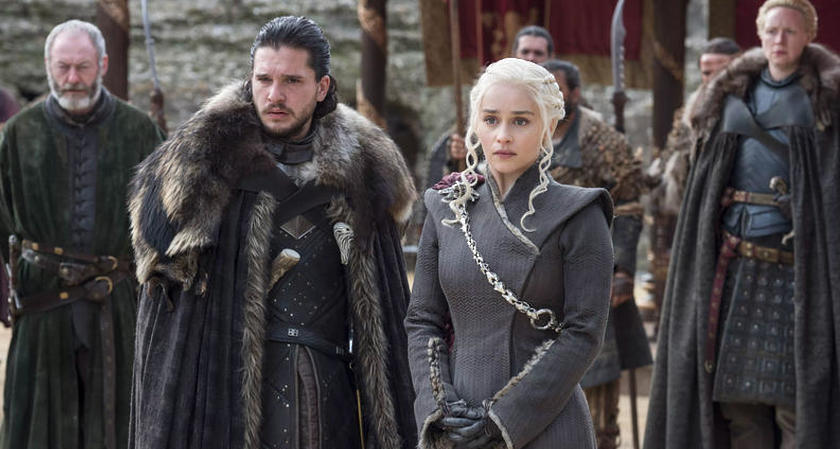A TEAM of mathematicians and psychologists have found the secrets of one of the most successful fantasy series of all time – claiming their research shows that good writers work successfully “within the psychological limits of the reader”.
Published this week, the research paper Narrative structure of A Song of Ice and Fire, is based on the books which inspired the Game of Thrones series.
It is the work of Thomas Gessey-Jones and Cathal O'Conchobhai, professors Colm Connaughton, Robin Dunbar and Ralph Kenna, Dr Pádraig Mac Carron and Dr Joseph Yose.
The team, from the Universities of Cambridge, Coventry, Warwick, Limerick and Oxford, found that, despite over 2,000 named characters appearing in A Song of Ice and Fire and over 41,000 interactions between them, at chapter-by-chapter level these numbers average out to match what we can handle in real life.
 The ground-breaking study analysed the series A Song of Ice and Fire, which Game of Thrones is based on
The ground-breaking study analysed the series A Song of Ice and Fire, which Game of Thrones is based onBased at Coventry University, Athlone native Professor Ralph Kenna explained: “This kind of study opens up exciting new possibilities for examining the structure and design of epics in all sorts of contexts; impact of related work includes outcry over misappropriation of mythology in Ireland and flaws in the processes that led to it.”
In order to conduct their research, the academics created an extensive map of the characters which feature in the series and found “remarkable similarities” to real life.
“So much so, that the sprawling narrative neatly fits into the type of societies which evolution has enabled us to keep track of,” they explain.
“Moreover, although important characters are famously killed off at random as the story is told, the underlying chronology is not at all so unpredictable,” they add.
They used network science and data analytics to quantify “static and dynamic structures” in the series by G. G. G. Martin, which is noted for its scale and complexity.
But as vast as the story may seem to us readers, or viewers of the iconic television series, it turns out the many faces that populate the story are no more than the average amount of people our brains are designed to handle coming into contact with.
 The team of academics created a network to help analyse the vast number of social interactions in the series
The team of academics created a network to help analyse the vast number of social interactions in the series“Even the most predominant characters – those who tell the story - average out to have only 150 others to keep track of. This is the same number that the average human brain has evolved to deal with,” the academic team confirmed.
They also found – by tracking the network of character interactions as the story unfolds – that the social connections made throughout the series are similar to those we enjoy in real life social networks.
And they claim that may well have been an intentional construct by the author.
“We propose that structural features in the narrative that are reflected in our actual social world help readers to follow and relate to the story, despite its sprawling extent,” they suggest.
The team has also concluded that the author paid particular attention to the chronology of the many death scenes witnessed throughout the Westeros-based saga.
“While matching mathematical motifs might have been expected to lead to a rather narrow script, the author, G.R.R.Martin, keeps the tale bubbling by making deaths appear random as the story unfolds,” they explained.
“But, as the team show, when the chronological sequence is reconstructed the deaths are not random at all: rather, they reflect how common events are spread out for non-violent human activities in the real world.”
 The findings show that the number of interactions in the series is reflective of real life experiences
The findings show that the number of interactions in the series is reflective of real life experiencesDr Pádraig Mac Carron commented: “These books are known for unexpected twists, often in terms of the death of a major character, it is interesting to see how the author arranges the chapters in an order that makes this appear even more random than it would be if told chronologically."
Thomas Gessey-Jones added: “The methods developed in the paper excitingly allow us to test in a quantitative manner many of the observations made by readers of the series, such as the books famous habit of seemingly killing of characters at random.”
While Game of Thrones has invited all sorts of comparison to history and myth, the marriage of science and humanities in this paper can be seen to open up new avenues to comparative literary studies.
It shows, for example, that the series is more akin to the Icelandic sagas than to mythological stories such as England’s Beowulf or Ireland’s Táin Bó Cúailnge.
“The trick in Game of Thrones, it seems, is to mix realism and unpredictability in a cognitively engaging manner,” the researchers added.
Professor Colm Connaughton explained: “People largely make sense of the world through narratives, but we have no scientific understanding of what makes complex narratives relatable and comprehensible.
“The ideas underpinning this paper are steps towards answering this question.”
Professor Robin Dunbar added: “This study offers convincing evidence that good writers work very carefully within the psychological limits of the reader.”
Source paper: Gessey-Jones et al, Narrative structure of A Song of Ice and Fire creates a fictional world with realistic measures of social complexity. Proceedings of the National Academy of Sciences, USA, 00 October 2020.

